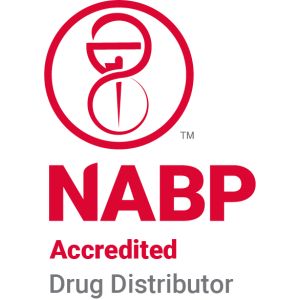Building Resiliency for the Next Big Supply Chain Interruption
Supply chain resilience continues to be the headline story of 2021, in the orthopedic medical device industry as well as across industries. As we look to the post-COVID period, what has the orthopedic industry learned about managing complexity, forecasting, sourcing, risk, and supply chain resiliency?
This is a key question, as supply chain disruption is certainly not behind us. After all, while COVID created challenges, other threats loom, including natural disasters, macroeconomic changes, shifts in regulation, and counterparty issues like material shortages and supplier planning, according to research from the McKinsey Global Institute.
In fact, according to the McKinsey research, supply chain interruptions and shocks aren’t rare. Disruption powerful enough to affect supply chains for two months or more happens, on average, every 3.7 years—and could cost OEMs up to 38% of one year’s earnings every decade.
Millstone has stayed at the forefront of supply chain uncertainty throughout the last months. As the full breadth of the supply chain reckoning became apparent to us, we explored the need to build greater resilience by addressing the greatest risks to supply chains, and we confronted the emerging post-COVID complexities of the orthopedic industry.
Now we’ve joined with OMTEC 2021 to sponsor a panel of industry experts in a webinar discussion on this topic. How to Build Resilience for the Next Big Supply Chain Interruption is available on-demand for OMTEC attendees or with a free registration, now through August 31. Featuring moderator Howard Levy from Zimmer Biomet with Brandy Maranian from Smith+Nephew, Jodie Gilmore from Elos Medtech, and Victor Swint from Tecomet, the 45-minute webinar shares diverse perspectives on supply chain resilience and industry lessons learned during this pandemic year.
Continuing uncertainty in supply chains
Across industries, we’ve learned over the last 15 months that many of the tools and processes we’ve counted on without question have shifted in ways we could never have imagined. This disruption has come from many vectors at once, including the pandemic, material shortages, and transportation delays from as disparate causes as lockdowns, inclement weather, and even the container ship stuck in the Suez Canal that blocked the global movement of goods.
Supply chain experts in orthopedics as well as other industries are realizing that traditional methods of planning and forecasting are no longer sufficient, and new ways of forecasting and collaborating are going to be necessary—especially as a high level of unknown persists into 2021 and possibly beyond.
Increased emphasis on business continuity planning
The continuing uncertainty and its effect on supply chains is driving businesses, including orthopedics suppliers and OEMs, to take a more proactive and flexible approach to business continuity planning. Amid such disruption, orthopedics firms have had to let go of long-term strategic plans and roadmaps and shift into greater flexibility, creating solutions in a rapidly evolving situation while preparing recovery and continuity plans that can be adapted to a wide range of scenarios.
Mitigating supplier risk
Before COVID-19, managing supplier risk took a back seat to the priorities of new product development and launches. Because of slowdowns and disruptions, managing supplier risk and creating robust mitigation plans is now a top priority for many firms. Supply chain professionals are using tools like global heatmaps to create more supply chain visibility, track their supply bases, and adjust mitigation plans to build more resiliency into their supply chains.
Accelerated digitalization
Remote work and an abrupt end to global travel have accelerated many firms’ digitalization efforts as they shifted to videoconferencing and adopted new ways of collaborating. In May 2020, the World Economic Forum noted that “the transition to a new model for supply chains will be underpinned by a rapid and wholesale digitization of the paperwork that accompanies global trade.” This has proven true, as we’re now aware that a great deal is possible in non-traditional ways of working, which may influence how work continues into a new normal.
Resiliency in supply chains, and beyond
Resiliency has truly become the focus of 2021, in supply chains and beyond. As the effects of COVID persist into this year and potentially longer, new ways of working and innovating have emerged. Suppliers and OEMs are collaborating more closely to smooth demand and develop new ways of forecasting. Risk mitigation has shifted to incorporate planning for systemic shock.
At one point, many in the orthopedic industry thought that 2021 might be smoother. With continuing disruption and uncertainty, this now looks like wishful thinking. Yet with insight into an evolving situation, OEMs and their supply bases can take steps toward building resiliency into their supply chains for the inevitable future interruptions.
At Millstone, we understand the challenges OEMs face in the robotic assisted surgery products market. We have successfully launched and supported packaging for four major orthopedic robot platforms and bring a birds-eye view of the growing robotic assisted surgery products market. Today we offer post-manufacturing and aftermarket services to more than 50 customers, including some of the top 10 orthopedic companies in the world. We are constantly evolving our processes and services to help OEMs achieve sustainable success. We offer clean room packaging, medical device specific warehousing, finished goods distribution, loaner kit management, advanced inspection and reverse logistics services—all with an unparalleled focus on quality.
What could we help you do better? Learn more at https://millstonemedical.com.
Comments are closed.



